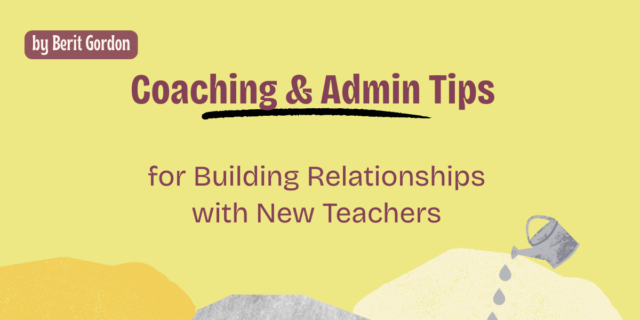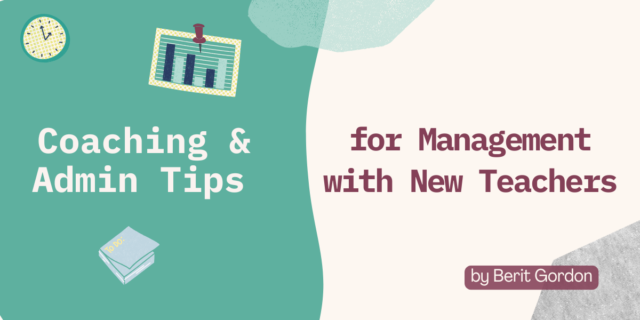During our month-long webinar series for the new school year, Heinemann is featuring a ”Classroom Essentials for Right Now” back to school blog series written by colleagues from The Educator Collaborative. Each blog offers practical, heartfelt advice on how to start the year off right. From being a thoughtful, reflective practitioner to creating a joyful community of learners, honoring student voice and choice. How do I choose the right books? How do I help my students become better writers? What do I do about grades? Join us as colleagues share their “Classroom Essentials for Right Now” from The Education Collaborative. In today's post, Heather Rocco writes about how to help our students understand grades.
During our month-long webinar series for the new school year, Heinemann is featuring a ”Classroom Essentials for Right Now” back to school blog series written by colleagues from The Educator Collaborative. Each blog offers practical, heartfelt advice on how to start the year off right. From being a thoughtful, reflective practitioner to creating a joyful community of learners, honoring student voice and choice. How do I choose the right books? How do I help my students become better writers? What do I do about grades? Join us as colleagues share their “Classroom Essentials for Right Now” from The Education Collaborative. In today's post, Heather Rocco writes about how to help our students understand grades.
 Image by Poodar Chu
Image by Poodar Chu
But What Does it Mean? Systems to Help Students Understand Grades
Written by The The Educator Collaborative Contributor, Heather Rocco
School is underway! You have your online or paper grade book organized with color-coded columns and point values assigned. You are ready to evaluate your 100, 125, or 150 students, posting a letter or number grade into a box at the end of every 10 or 20 week period based on the grades you have collected throughout the marking period. But do your middle or high school students know what the letter represents? For most students (and their parents), they believe it means they are either good at English or not. They do not see a C as opportunity to grow as a writer of argument or a reader of science fiction or a public speaker or a inquisitive researcher. They see it as judgment. And we, their secondary level teachers, bemoan this dynamic. We want our students to see the growth potential in that B- or understand what learning they need to move from a B+ to an A. However, we have taken this want and made it our students’ responsibilities to figure out, which they are truly not trained to do. So if we want our grades to mean something more to students than “good” or “bad,” we need to improve how we assess and communicate growth for students.
Now, this post does not even begin to deconstruct the many flaws of the grading system in which we must live and work. Though I have plenty of grandiose thoughts about dismantling it, I’m an idealist trapped in a practical world. Therefore, what I propose here is for secondary teachers to borrow a few great ideas from their elementary colleagues to make the learning more tangible and transparent for their students. These small steps can make huge strides to helping students understand what the grades mean and, more importantly, how to grow as readers and writers.
- Meet regularly with your students. I know, I know. You have 150 students, and this task can seem daunting. However, you can re-imagine your class period structure to make time and room for these important conversations. As students read independently or complete a do now activity, you can meet with one or two students about their reading lives. As students work in small groups, you can have a writing conference with two or three students. These conversations are typically five minutes or less, and can open with a simple (to borrow from the brilliant Carl Anderson) “So, how’s it going?” If you set a routine to meet with students during your classes, you’ll be surprised how many students you can see in a week or a month. Even more importantly, you’ll get to know their interests and needs really well!
- Set individual student goals. When you meet with students, help them set an individual reading or writing goal that they are striving to meet over the next few weeks. These should be grounded in the current unit in which the class is working, though variations may occur. These goals might range from “read for twenty minutes a day” to “better integrate quotes into writing” to “notice how the writer uses a multi-narrator structure to move the plot.” These goals should be posted somewhere, either on a post-it note on their desks or in their notebooks or in their digital folders. When students meet these goals, students can add them to a “Mission Accomplished” list that they keep in a digital or print version.
- Take anecdotal notes. Whenever you meet with students, jot down a few notes about what you discussed and the goal you set. Often, we ask students to record these notes, or we think the feedback we write on the students’ papers is enough. However, the notes we keep on each student can help shape our instructional plans for the class and future conferences with individuals.
- Teach in small groups. Middle and high school teachers tend to use small groups as students complete a task or explore an idea. Teachers, then, walk around the room, monitoring students’ progress and offering support, as necessary. While this can be a productive use of time, teachers can also use small groups as an opportunity to teach a strategy lesson or revisit a mini-lesson to provide students more personalized instruction. Teachers can sit with four or five students to teach them while the other groups collaborate on their assigned task. These small group lessons might take anywhere from five to ten minutes. The focused instruction can make a big impact on students’ learning and growth. If you’re in the habit of setting individual goals and recording anecdotal notes, you will be able to quickly group students based on their needs and/or readiness, which will make for more meaningful group experiences.
These steps will help you and your students understand what those report card letters mean and how they can continue to grow as a reader and writer.
Have a great school year!
♦ ♦ ♦ ♦
For more information, and to join Heather and her colleagues from The Educator Collaborative in a live online PD series this month, click here (and check back on Monday for "But What Does it Mean? Systems to Help Students Understand Grades" in our Educator Collaborative blog series):
♦ ♦ ♦ ♦

With nearly twenty years of literacy instruction expertise at the secondary level, Heather has served as a classroom teacher, English Language Arts Supervisor for grades K-12 and an education consultant in some of the highest performing schools in New Jersey. She focuses much of her professional work on designing learner-centered, authentic literacy experiences for students. She has supported districts in designing standards-based and student-focused curricula, adopting new instructional methods, and leading school-wide initiatives with passion.
Additionally, Heather has an extensive background in supporting and coaching literacy leaders. Heather has served as Program Chair for NCTE’s Conference on English Leadership (CEL) Annual Convention and was elected CEL’s Associate Chair in 2014. Through her work with CEL, she designs professional learning opportunities for administrators, supervisors, teacher-leaders, and coaches to help them implement and sustain effective instructional practices and curriculum. She also facilitates the organization’s #LitLead, a monthly Twitter chat for literacy leaders.
Heather speaks and writes passionately about issues and trends affecting teachers, leaders, schools, and, most importantly, students.She has presented at national, state, and local conventions, including NCTE, ASCD,CEL, NJPSA and NJLALA. Her work has been published in the English Leadership Quarterly, Educational Viewpoints, and the New Jersey Council of Teachers of English Journal. She is currently doing research for a book on learner-centered, secondary level instruction.
Heather brings her passion for student-centered learning, differentiated instruction, and transformative leadership to her school consulting and speaking engagements. She works with schools to design and implement engaging curriculum and dynamic learning experiences for students and educators. Follow here on Twitter @HeatherRocco.


